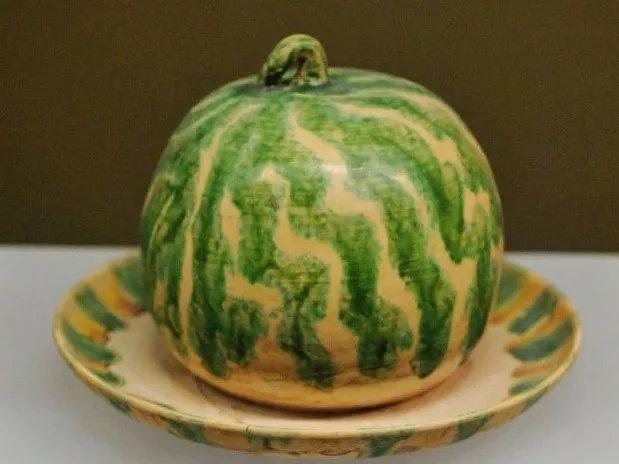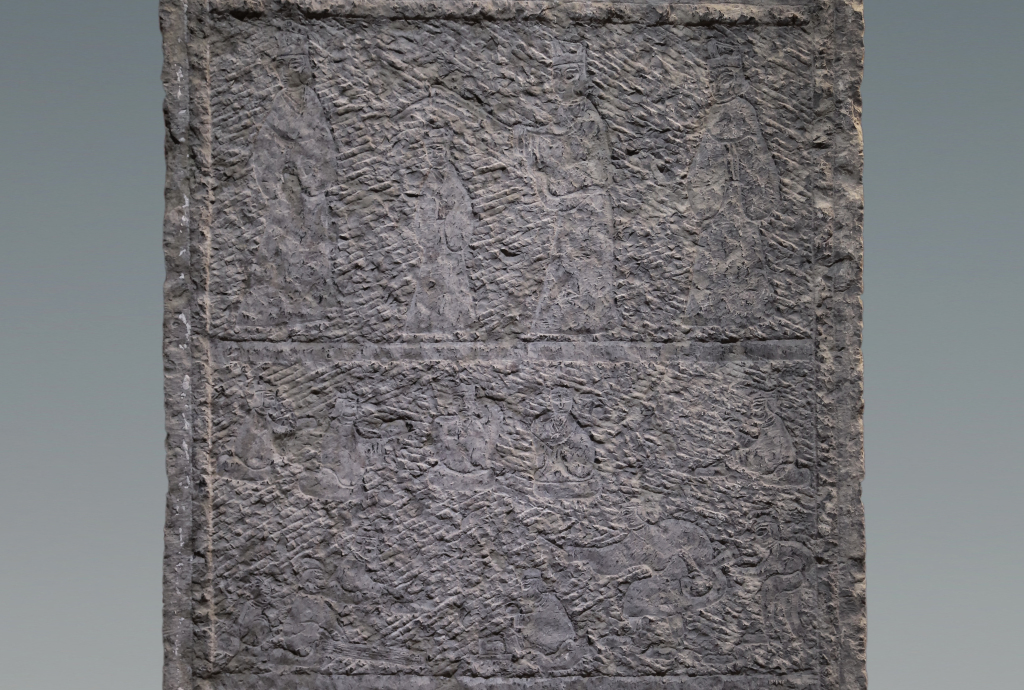
On the 14th day of the lunar calendar, the beginning of winter. Winter is also the end, everything is collected.
"Book of Rites, Yueling" records the three waiting times of the beginning of winter as: "the first waiting for the water to freeze; the second waiting for the ground to freeze; the third waiting for a pheasant to enter the big water is a mirage." Among them, the pheasant finger in "the pheasant enters the big water is a mirage" A bird such as a pheasant, the mirage is a large clam. After the beginning of winter, big birds such as pheasants are rare, and the ancients believed that it was a pheasant that ran into the water and turned into a big clam. The flow of life and the change of species were interpreted as romantic imagination by the ancients.
The seasons change, and although the pheasants in nature have disappeared, they are often seen in the paintings and calligraphy of the past dynasties. For example, in Zhao Ji's "Furong Golden Pheasant Picture" in the Northern Song Dynasty, the golden pheasant that fell on the hibiscus branch looked back and stared, his eyes fixed, and the poem inscribed with the sentence "Easy to win the mallard"; Ming Dynasty Lu Ji's "Hanxue Mountain Chicken Picture" depicts the frozen sky and the ground. At that time, the pheasant was alone on the rock, looking up, as if waiting, making people feel the coldness between heaven and earth.
On the occasion of this early winter festival, "The Paper: Ancient Art" specially reviews the pheasants in the paintings collected by the Palace Museum and the Taipei Palace Museum for readers.
Song Zhaoji Furong Golden Pheasant Chart Scroll
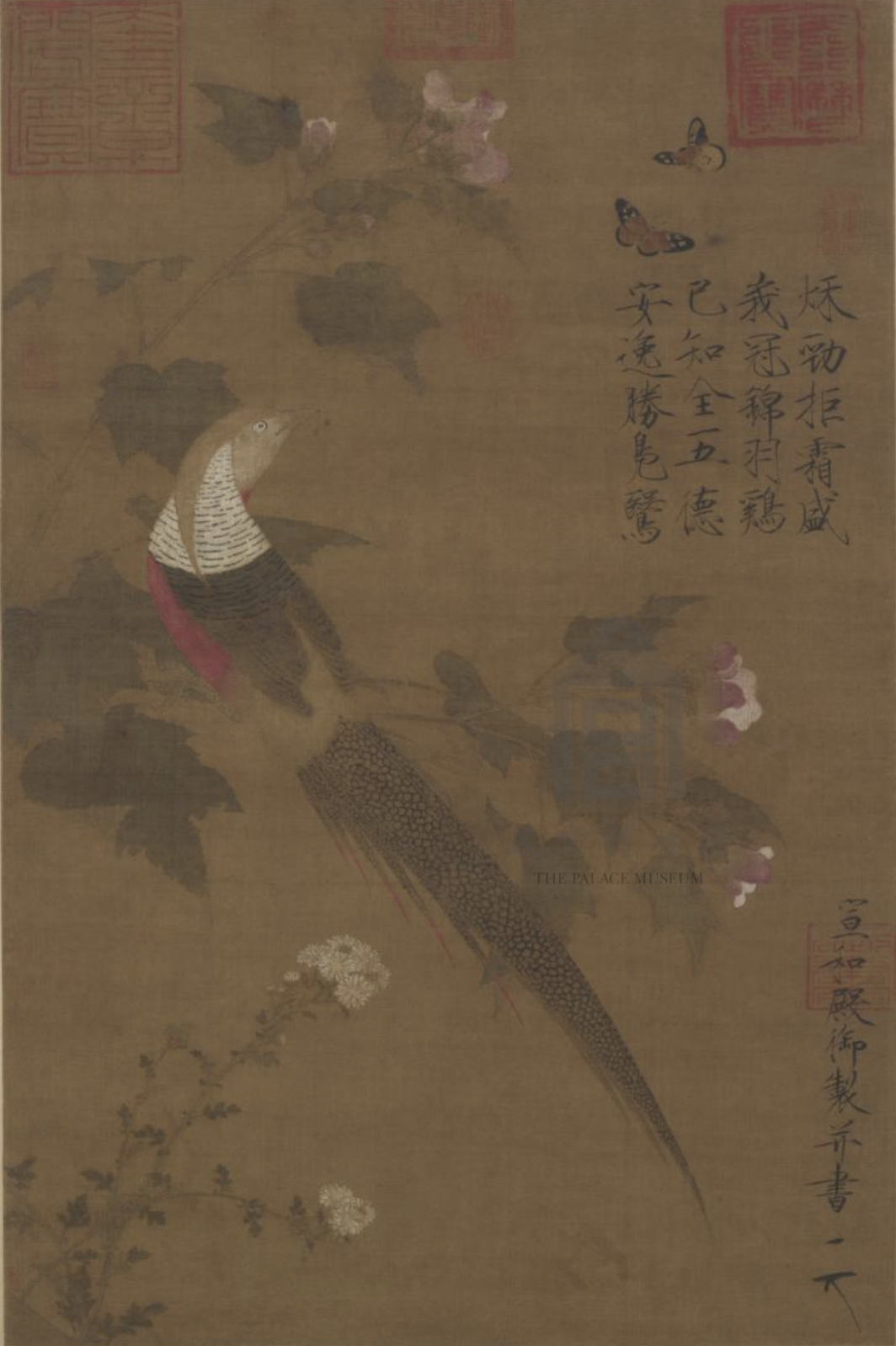
Song Zhaoji Furong Golden Pheasant Scroll Collection of the Palace Museum
As an independent painting department, the flower and bird paintings of the Song Dynasty have reached a high artistic level in terms of drawing skills and expressions. This picture is a flower and bird painting depicting the golden autumn scenery. The hibiscus in the picture is in full bloom, trembling gently with the wind, and the butterflies fluttering, chasing and playing with each other, attracting the golden pheasants that fell on the branches to look back and fix their eyes. In the upper right of this painting, Song Huizong Zhao Ji inscribed in a thin gold style "Autumn is strong against frost, Eguan Jinyu chicken. Known all five virtues, An Yi wins the mallard", and the lower right inscription "Xuanhe Palace Imperial System", cursive The book is "one person in the world". Chickens have always been known as "virtuous birds" in China. "Han Shiwaizhuan" contains: "The chicken has five virtues: those who wear a crown on their heads are literate; those who fight with their feet are martial; those who dare to fight are brave; Those who see the food and call out are benevolent; those who keep vigil at night are also faithful.” It can be seen that his character of both civil and military, benevolence and courage, faithfulness and single-mindedness is highly appreciated by the world. "Five virtues, ease wins over the mallard" poem, which expresses the praise of ease and nobility, and thus reflects the humanistic implication of Chinese flower and bird painting.
Among the works currently circulating in the world titled Zhao Ji, the artistic style presents two distinct features of meticulous craftsmanship and simplicity and clumsiness. Museum), etc., and simple and clumsy ones such as "The Willow Crow" (collected by the Shanghai Museum), "Loquat Mountain Bird Picture" and so on. Through a comparative analysis of the style of brush and ink, Mr. Xu Bangda pointed out that the former was not made by Zhao Ji, but the work of a painter in the painting academy, while the latter was his own handwriting. This view is recognized by most art historians. In addition, Volume 3 of the "Continued Records of the Pavilion of the Southern Song Dynasty", which records the paintings collected by the court in the Southern Song Dynasty, includes this painting in the category of "Royal Inscription Paintings" alongside the "Royal Paintings", indicating that the "Furong Golden Pheasant" was only inscribed by Zhao Ji himself. A painting of flowers and birds in the poem, not painted by himself. Therefore, although there is an inscription by Zhao Ji on the picture, the author of this picture is a master of the painting academy who did not leave his name.

As the emperor who paid the most attention to artistic affairs and was obsessed with painting and calligraphy in Chinese history, during the reign of Emperor Huizong of Song Dynasty and Zhao Ji, he collected a large number of famous paintings, compiled a description of the paintings and calligraphy of the royal painting collection - "Xuanhe Shupu" and "Xuanhe Painting Pu", established the Hanlin The painting academy has improved its system, and personally guided the study and creation of the painters of the painting academy according to their own aesthetic concepts. Regarding the creation of paintings, Zhao Ji not only pays attention to the meticulous reproduction of the depicted objects, but also requires the pictures to contain the artistic conception of poetry, which is an artistic experience with endless aftertaste. The aesthetic thought of the emperor with artistic cultivation. The double hook method used in the whole picture is fine and strong, not only the flower branches and leaves and the golden pheasant are accurate in shape, but also the swaying state of the hibiscus pressed by the golden pheasant can also be faithfully reflected. In addition, the colors are smeared with clear layers and suitable shades, which is dignified and elegant in the grandeur. The temperament can be called "both shape and spirit, and the best of music". As far as composition is concerned, the hibiscus and golden pheasants are concentrated on the left side of the frame, echoing the fluttering butterflies on the upper right, making the intricate layout appear dense and sparse, with a moderate degree of yielding. The poems written in a thin and vigorous style and the delicate and colorful pictures complement each other and complement each other.
Song Li Difeng's painting of golden pheasant

Song Li Difeng Eagle Golden Pheasant Chart Scroll Collection of the Palace Museum
This picture, also known as "Eagle and Pheasant" or "Eagle Peeking at a Pheasant", is a rare giant painting in the Song Dynasty. It was created by Li Di, a court painter in the Southern Song Dynasty. According to the signature on the upper left, "Li Di's painting at the age of Bingchen in Qingyuan", it is known to have been made in the second year of Qingyuan (1196) of Song Ningzong.
The picture is composed of diagonal lines. The main bird and eagle is placed on the top of the dead branch in the upper left corner, looking down and staring at the golden pheasant in the lower right corner. The golden pheasant screamed and fled into the grass. The echoing relationship of the slashes and the dynamic movement of the golden pheasant rushing out of the painting create a strong and tense atmosphere. The painter deliberately depicts the three key parts of the goshawk's eyes, beak and claws. The eyes are round, the steel beak is like a hook, and the tips of the claws are buckled into the bark, which not only highlights the ferocious and vigorous nature of the eagle, but also emphasizes the cohesion of power when capturing prey. And the concentration of the mind can be described as true and expressive. The image of the pheasant is also lifelike, with its panicked and fleeing posture, its frightened eyes, its fluttering feathers, especially the action of kicking out its hind legs and shrinking its claws, accurately depicting the situation of rushing to escape but unable to escape bad luck, it can be seen that The author's keen insight into living things and capturing the dynamics of moments, and the expressive power of sketching.
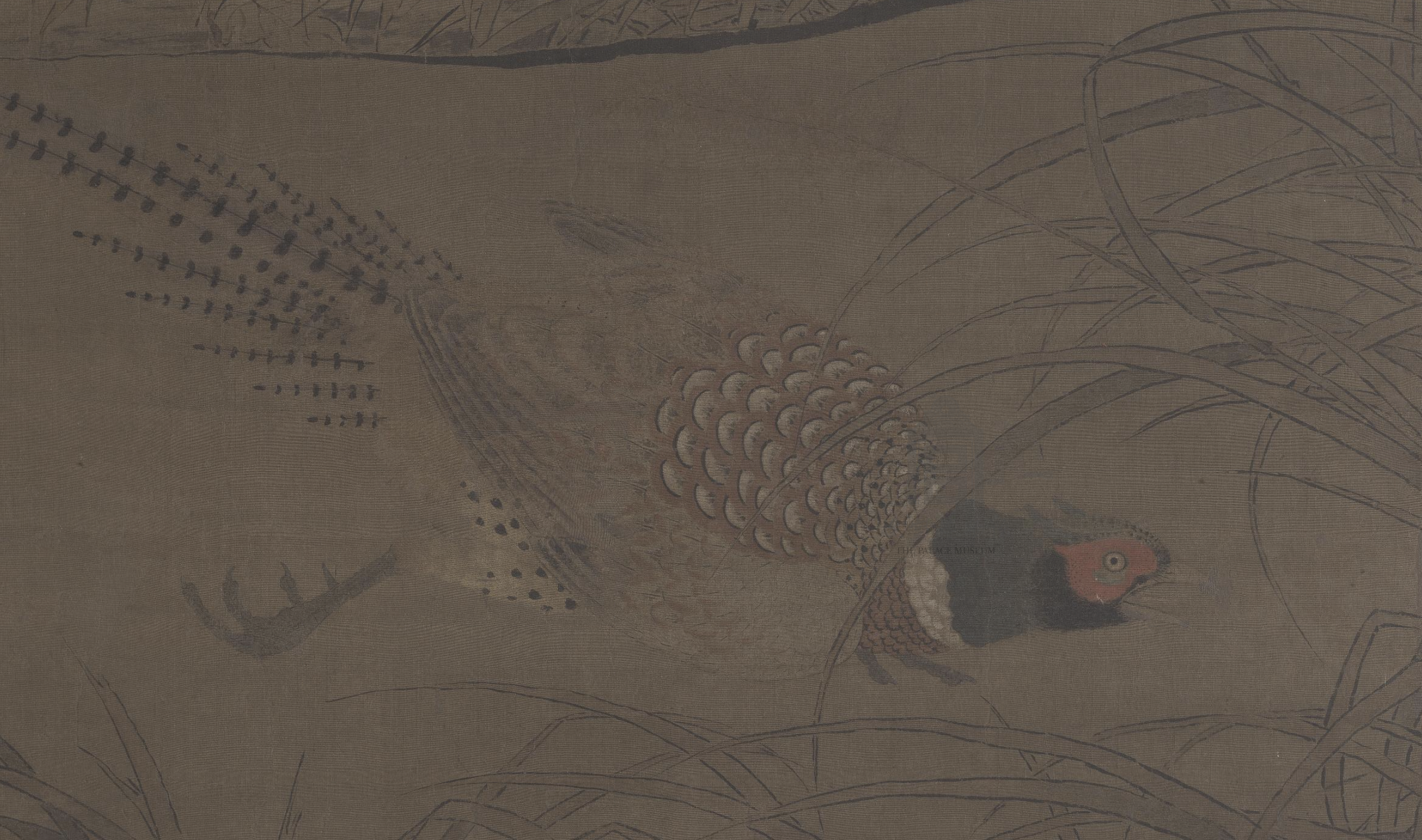
Song Lidi Feng Eagle Golden Pheasant Scroll (Part) Collection of the Palace Museum
The brush and ink application skills of the works are also very mature. The birds and birds are neat and delicate, and the coloring is light. The traditional painting of flowers and birds in the courtyard since Cui Bai of the Northern Song Dynasty adds more dynamism and business. The trunk is thick and finely dyed, with dots and dots, showing a vigorous quality. Maple leaves, bluegrass, and clumps of bamboo are painted with fine brushes and double ticks, rendered in light ink, with flexible shapes, dense and dense. The mountains and rocks are transported with axe and cleaved, and they are also used for rubbing and dyeing with heavy brush and ink. Nearly Li and Tang Dynasty, the method of the Northern Song Dynasty was preserved. This picture can be called a masterpiece of flower and bird painting in the Song Dynasty.
Song Lin chun flower and bird axis
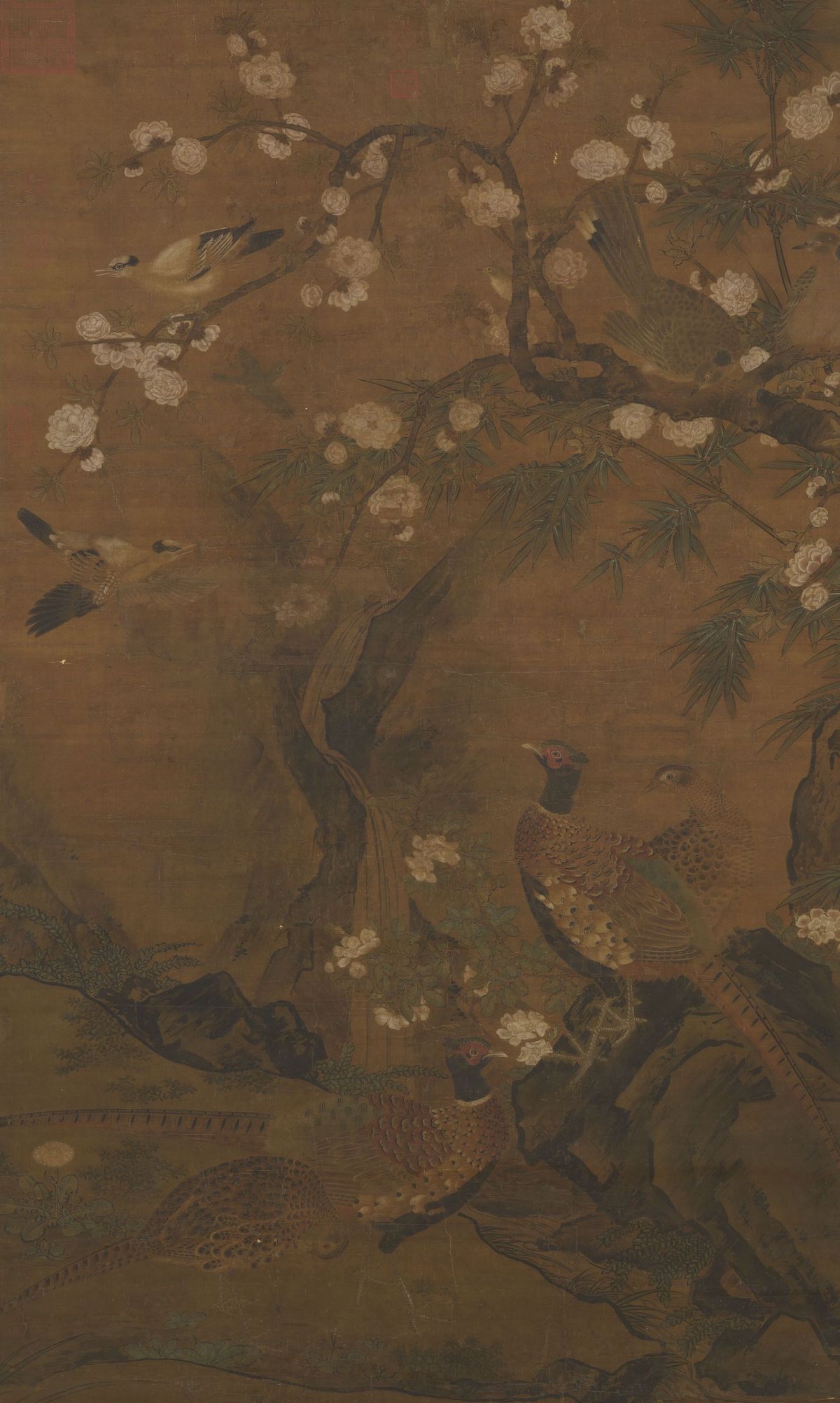
Song Lin Chunhua and Bird Scroll Collection of the National Palace Museum, Taipei

Song Lin Chunhua and Bird Scroll (detail) Collection of the National Palace Museum, Taipei
Song Kesi Aragonite Golden Pheasant Axis
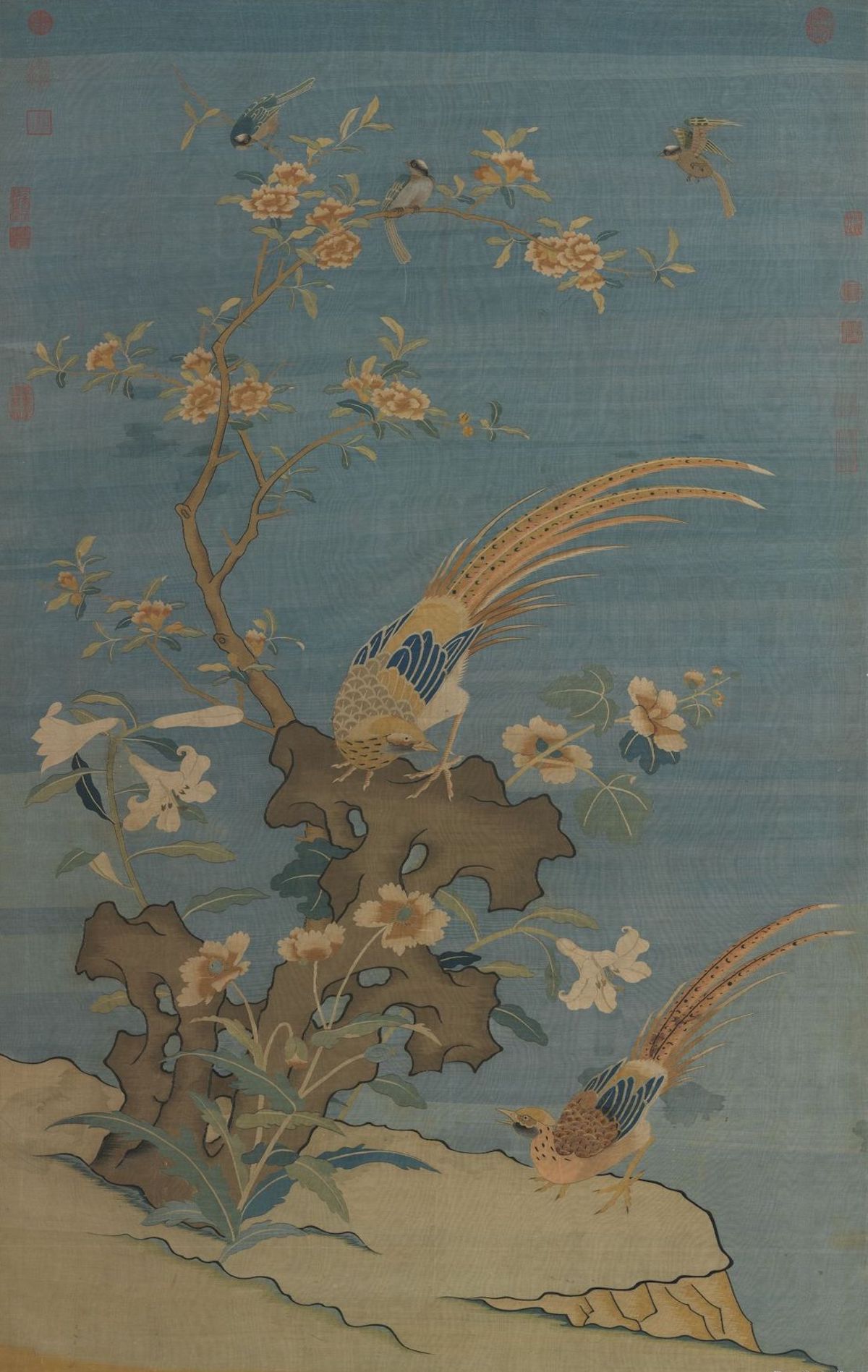
Song Kesi Aragonite Golden Pheasant Scroll Collection of the Palace Museum, Taipei
Yarn-dyed in light blue. A pair of golden pheasants play among the lake rocks, and various flowers such as pomegranates, lilies, and hollyhocks are planted beside the lake rocks. Bright colors and harmonious color scheme. Golden pheasants come in pairs, pomegranates, lilies, and pustules all have the meaning of a hundred years of harmony and old age, which are the most suitable for wedding celebrations.
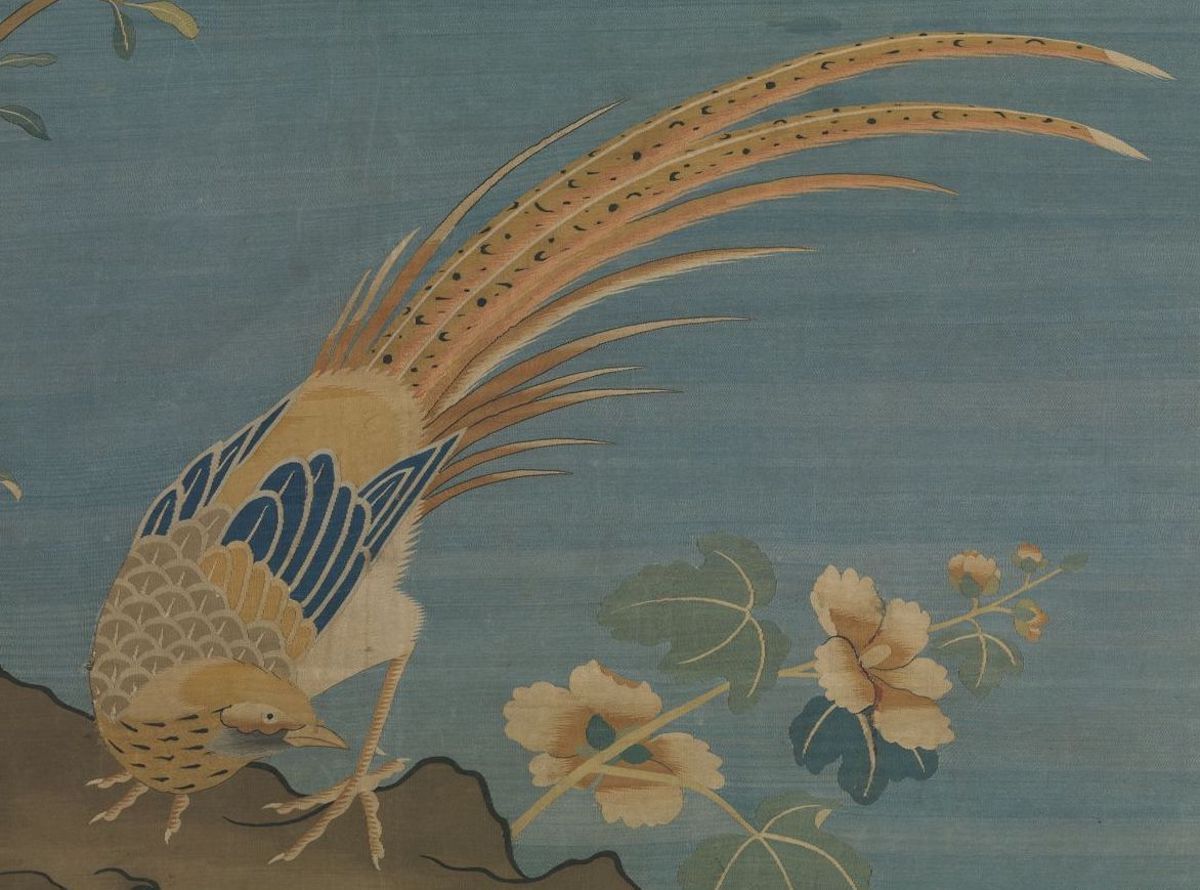
Song Kesi Aragonite Golden Pheasant Scroll (detail) Collection of the National Palace Museum, Taipei
This piece of weaving is precise, using the method of "winding the shuttle" to interweave lines on the warp to express a three-dimensional effect. It also uses the coloring method, and the color changes are delicate and rich. Yu, etc., all use ink brushes to complement the colors, capturing the characteristics of birds and their proud demeanor, which is very artistic.
Yuan Wangyuan Peach Bamboo Golden Pheasant Chart Scroll

Yuan Wangyuan Peach Bamboo Golden Pheasant Scroll Collection of the Palace Museum
The picture bears the signature of Wang Yuan: "Zhizheng has been ugly (1349) Wang Ruoshui made a picture of the peach and bamboo golden pheasant for Huiming." The seal was privately printed on both sides. This picture combines neat double-checked lines and delicate ink rendering into one, forming a painting technique of concurrent writing and writing, using ink instead of color, born out of the five-dynasty Huang Quan's "Huang family wealth and honor" meticulous color painting style, reflecting the The literati paintings have the aesthetics of heavy ink and light color. The painter uses ink brushes, smudges, and thick and thin brushes. The strokes are steady and free and easy. The ink and wash layers are rich in changes and have a sense of transparency.
The picture axis of the golden pheasant in Minglin
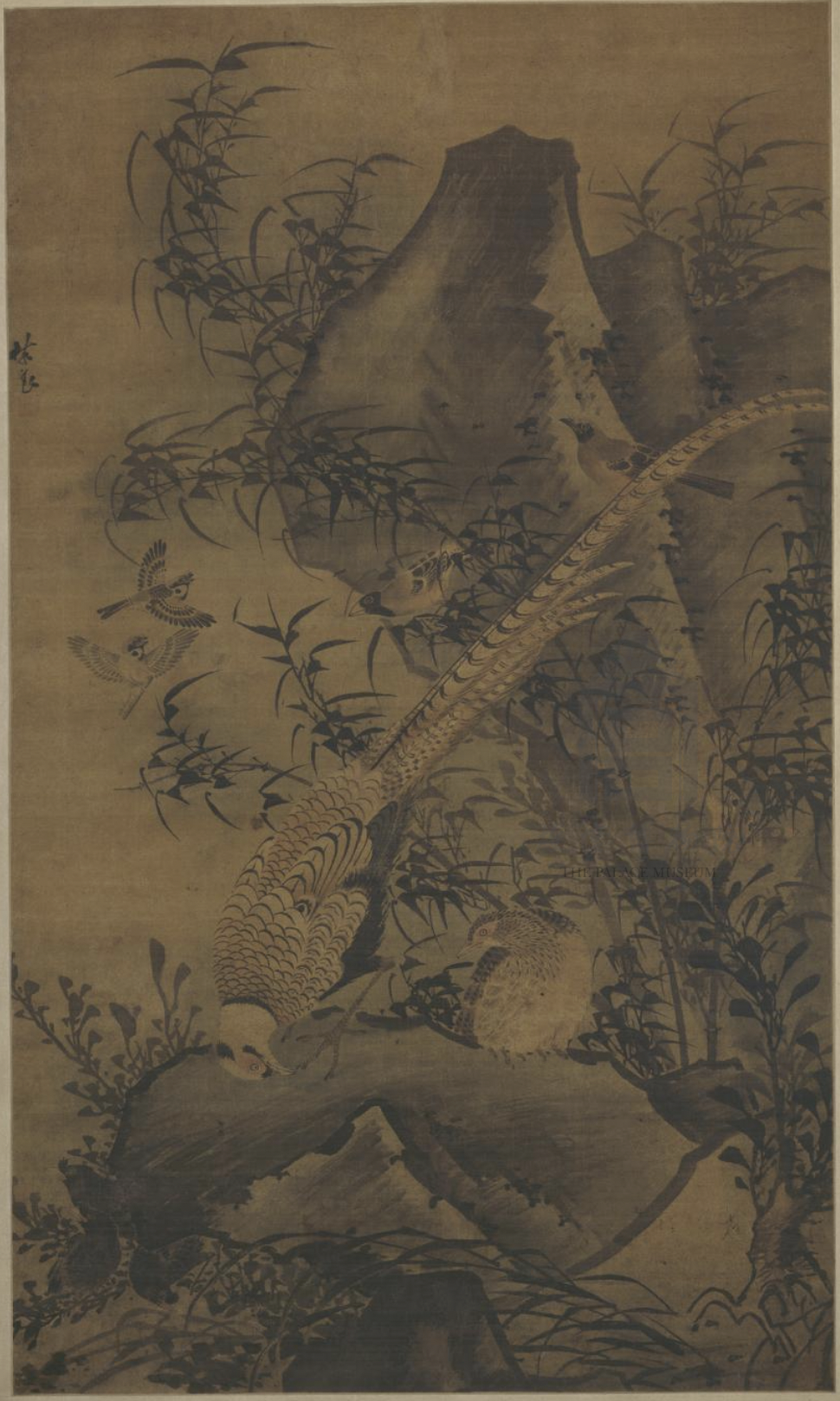
Minglin Liangjin Pheasant Chart Scroll Collection of the Palace Museum
The main body of the painting is a pair of golden pheasants, with sparrows flying up and down, cuckoos, turtledoves, etc. perched among the branches and leaves; the solid rocks, thin bamboos swaying in the wind, and clumps of shrubs form a natural space full of business. Lin Liang is famous for his paintings of flowers and birds. He uses rough brush and ink to make the rich and noble birds show a wild and natural state. He unifies the agility of ink painting from life with the realistic rigor pursued by court painting, creating a new aesthetic taste. Ming Dynasty court paintings have a great influence.
Ming Lu Ji painted grass, flowers and wild birds axis

Ming Lu Ji painted grass, flowers and wild birds in the collection of the National Palace Museum, Taipei
Under the sorghum bushes, a pair of wild pheasants are looking down for food, and there are three other finches soaring above. The composition of the scene is vivid and interesting. There was no signature of the author on the painting, because it was stamped with Lu Ji's seal, and it was mistaken for his work. In fact, although this painting is excellent, its style is different from that of Lu Ji. It is speculated that it should have been made by other masters in the Ming Dynasty. Lv Ji (active from 1439 to 1505), a native of Yin County, Zhejiang Province. Emperor Xiaozong of the Ming Dynasty worked in Renzhi Hall to paint and was awarded the official name of Jinyi Commander.

Ming Lu Ji painted grass, flowers and wild birds (detail) Collection of the National Palace Museum, Taipei
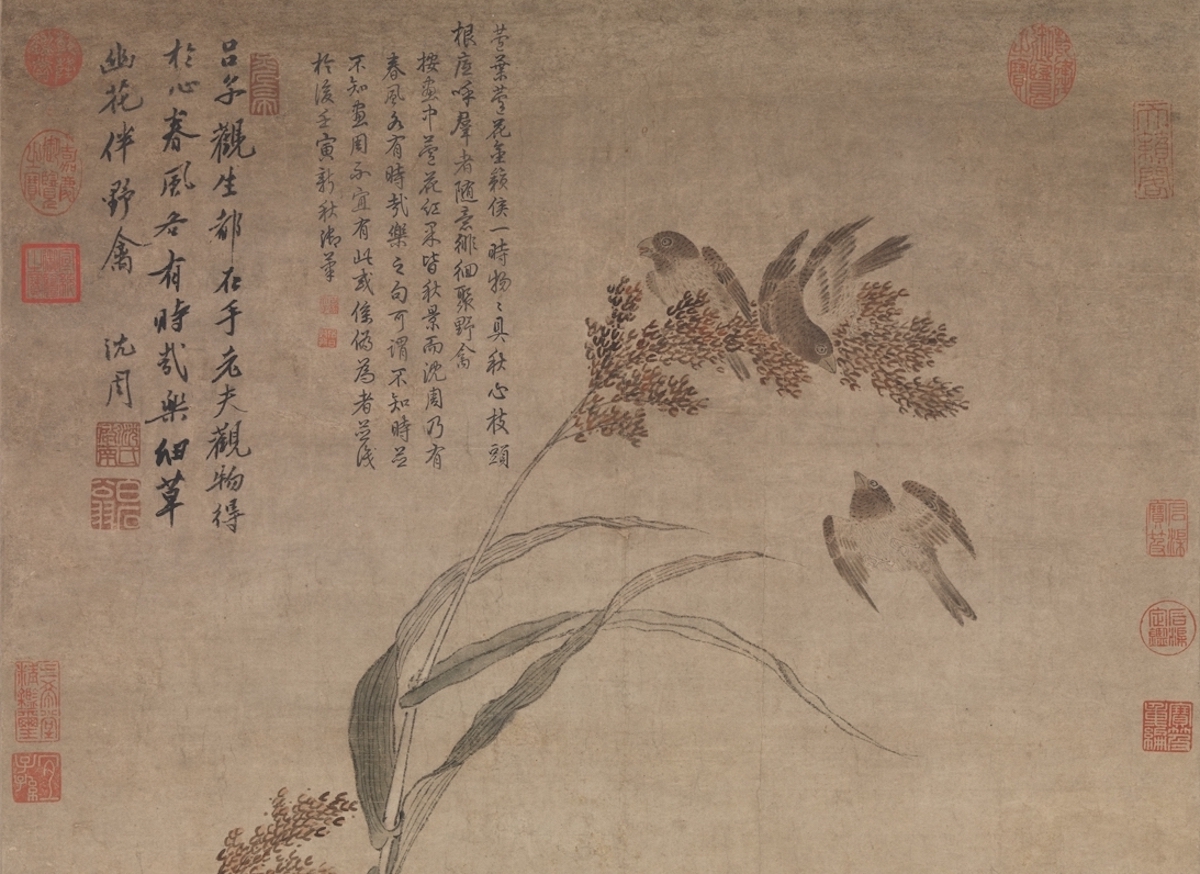
Ming Lu Ji painted grass, flowers and wild birds (detail) Collection of the National Palace Museum, Taipei
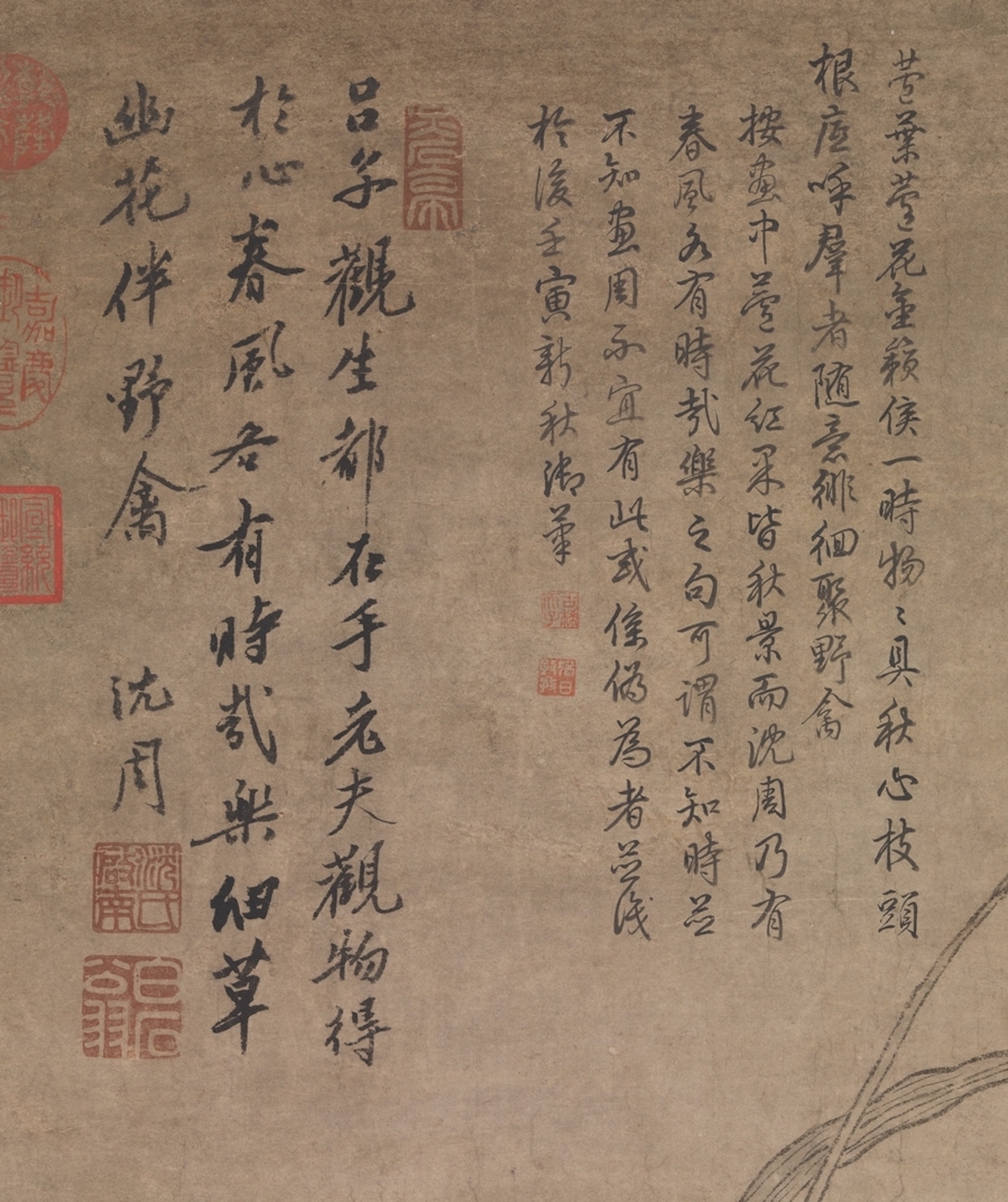
Ming Lu Ji painted grass, flowers and wild birds (detail) Collection of the National Palace Museum, Taipei
This painting has an inscription and postscript in Shen Zhou's running script: Lv Zi observes that both students are in hand, and the old man sees things in his heart. The spring breeze is joyous at times, and the fine grass and flowers are accompanied by wild birds. Shen Zhou.
Ming Lu Ji Hanxue Pheasant Chart Scroll

Ming Lu Ji Hanxue Mountain Chicken Scroll Collection of the National Palace Museum, Taipei
Lv was a court painter in the Ming Dynasty, and his style of painting was mostly craftsman, but this painting belongs to his rare freehand style. It seems to be fast, but it is steady and not sloppy. Although the painting of "Autumn Heron and Hibiscus" in the courtyard is a work of fine brushwork, the fine brushes in the two have the same feeling of breaking the meaning of the brush.

Ming Lu Ji Hanxue Mountain Chicken Scroll (detail) Collection of the National Palace Museum, Taipei
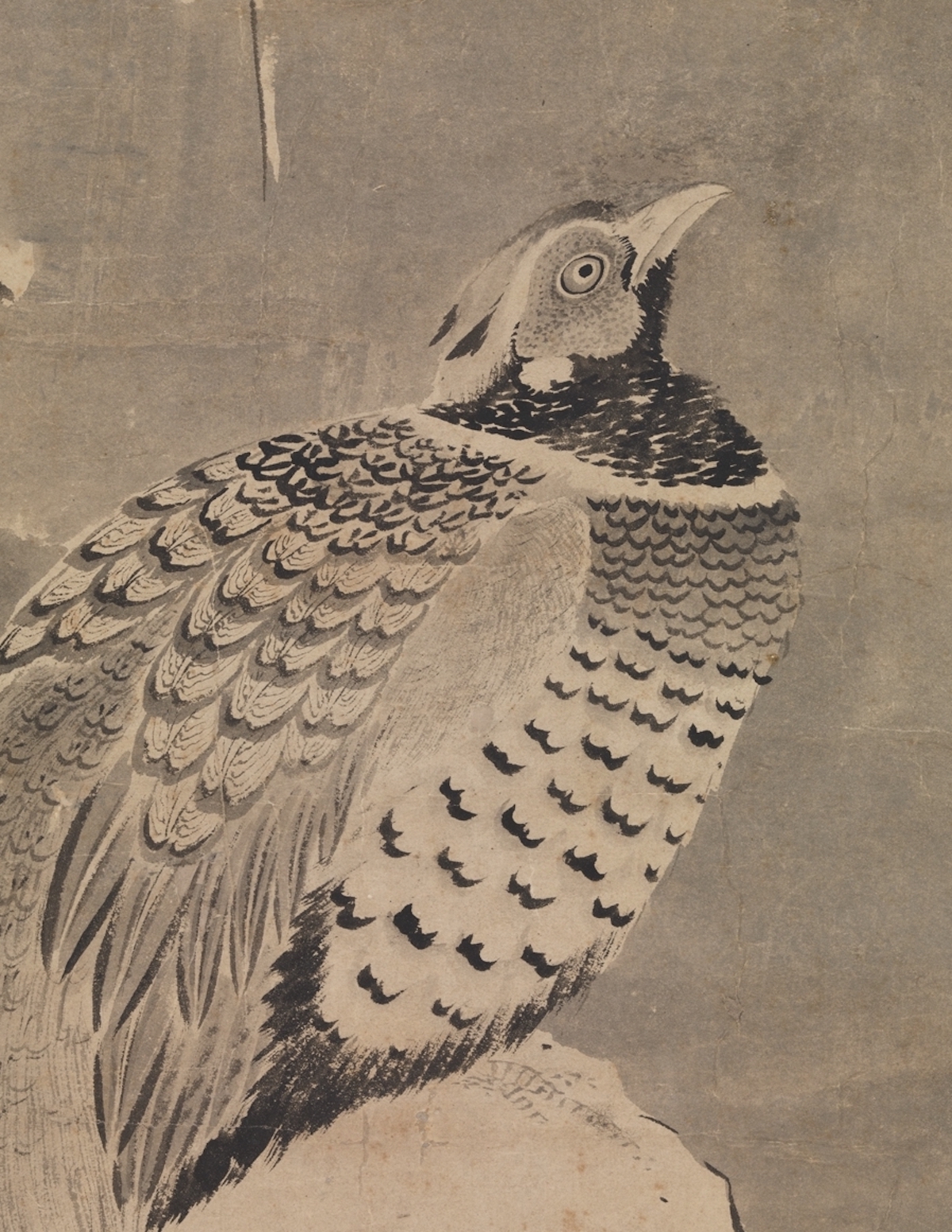
Ming Lu Ji Hanxue Mountain Chicken Scroll (detail) Collection of the National Palace Museum, Taipei
This picture shows a pheasant sitting alone on a rock when the weather is cold and the ground is freezing, looking up, as if waiting. In order to describe this vast atmosphere of ice and snow, the author uses light ink to dye the sky and the earth black, and let the trees and rocks show white to show the snow, and with the white and meandering water in the lower right corner, a chilling air bursts out from each other. . Coupled with the depressed vines and the somber pheasants, it makes people feel that there is a cold between heaven and earth, which is one of the rare masterpieces.
Qing embroidery peony golden pheasant scroll

Qing Dynasty Embroidery Peony Golden Pheasant Scroll Collection of the Palace Museum
A pair of golden pheasants with gorgeous wings are embroidered on the beige damask ground, playing in a mountain stream with blooming peonies and gurgling streams. The painting also uses a variety of stitching techniques. The branches and leaves are embroidered with trocars, the water waves are embroidered with rolling needles, the tail markings of the rooster are embroidered with uniform needles, the feathers are embroidered with scale needles and wool needles, and peony flowers are embroidered with overlapping needles. The images are vivid and real. , with different textures and three-dimensional senses, and the background level is also in line with the natural form. The composition of the picture is dense and dense, and the colors are rich and elegant, revealing a sense of wildness and emptiness in the graceful and luxurious.
(This article is compiled from the relevant materials of the Palace Museum and Taipei Palace Museum.)
